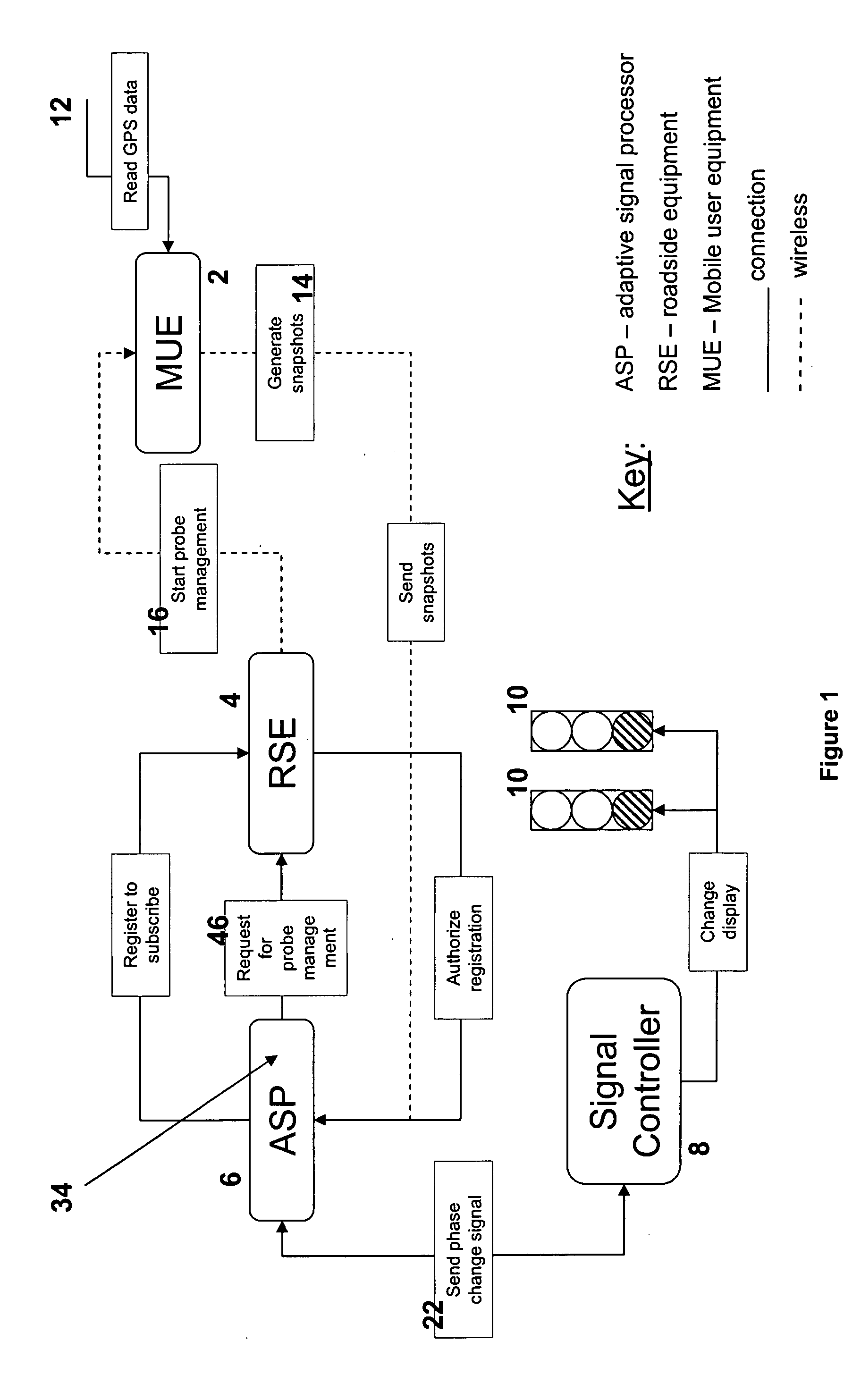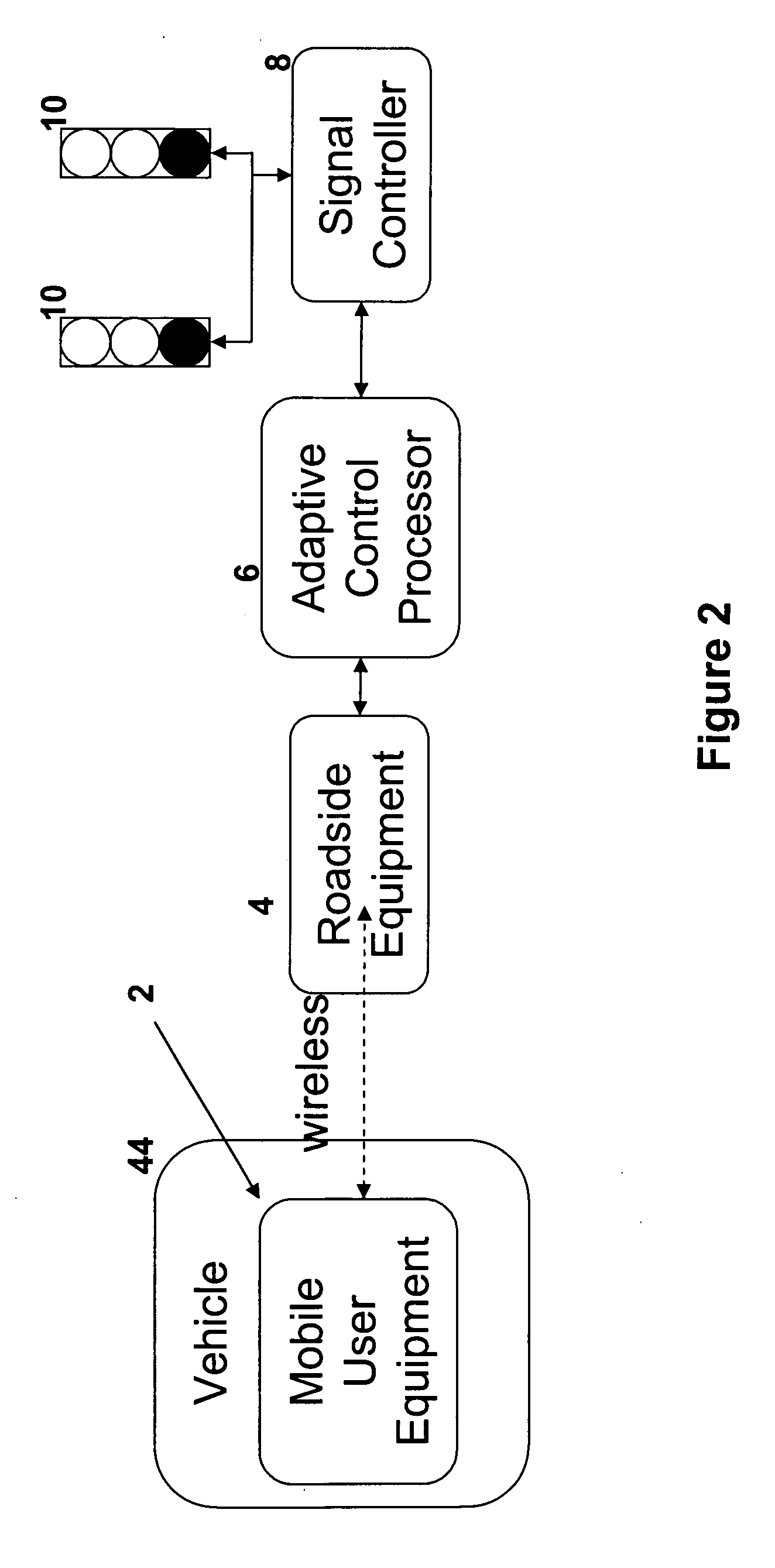Adaptive traffic signal phase change system
a traffic signal and phase change technology, applied in the direction of road vehicle traffic control, traffic control of traffic signals, controlling traffic signals, etc., can solve the problems of inability to detect traffic, current systems are not aware of traffic, and data may not be valid at locations other than detectors, so as to reduce maintenance costs and increase traffic flow
- Summary
- Abstract
- Description
- Claims
- Application Information
AI Technical Summary
Benefits of technology
Problems solved by technology
Method used
Image
Examples
Embodiment Construction
[0026]The adaptive control process of the instant invention consists of series of elements as shown in FIG. 1. They comprise mobile user equipment (MUE) 2 which is intermittently in wireless communication with roadside equipment (RSE) 4. An adaptive control signal processor (ASP) 6 communicates with RSE 4 to inform a signal controller 8 of the optimal time to make phase changes to traffic signals 10, 10′. These elements are structured such that they can be developed as separate software and / or software / hardware modules.
[0027]The flow of events is as follows:
[0028]1. Probe Management to Roadside Equipment
[0029]Referring to FIG. 2, MUE 2 reads real time GPS data 12 through known means to create a series of data snapshots 14 of a vehicle 44 position and movement with respect to a traffic signals 10, 10′. Traditionally, when vehicle 44 is within range of a RSE 4, a single data message containing multiple snapshots 14 is transmitted from vehicle 44 to RSE 4 and no further interaction tak...
PUM
 Login to View More
Login to View More Abstract
Description
Claims
Application Information
 Login to View More
Login to View More - R&D
- Intellectual Property
- Life Sciences
- Materials
- Tech Scout
- Unparalleled Data Quality
- Higher Quality Content
- 60% Fewer Hallucinations
Browse by: Latest US Patents, China's latest patents, Technical Efficacy Thesaurus, Application Domain, Technology Topic, Popular Technical Reports.
© 2025 PatSnap. All rights reserved.Legal|Privacy policy|Modern Slavery Act Transparency Statement|Sitemap|About US| Contact US: help@patsnap.com



